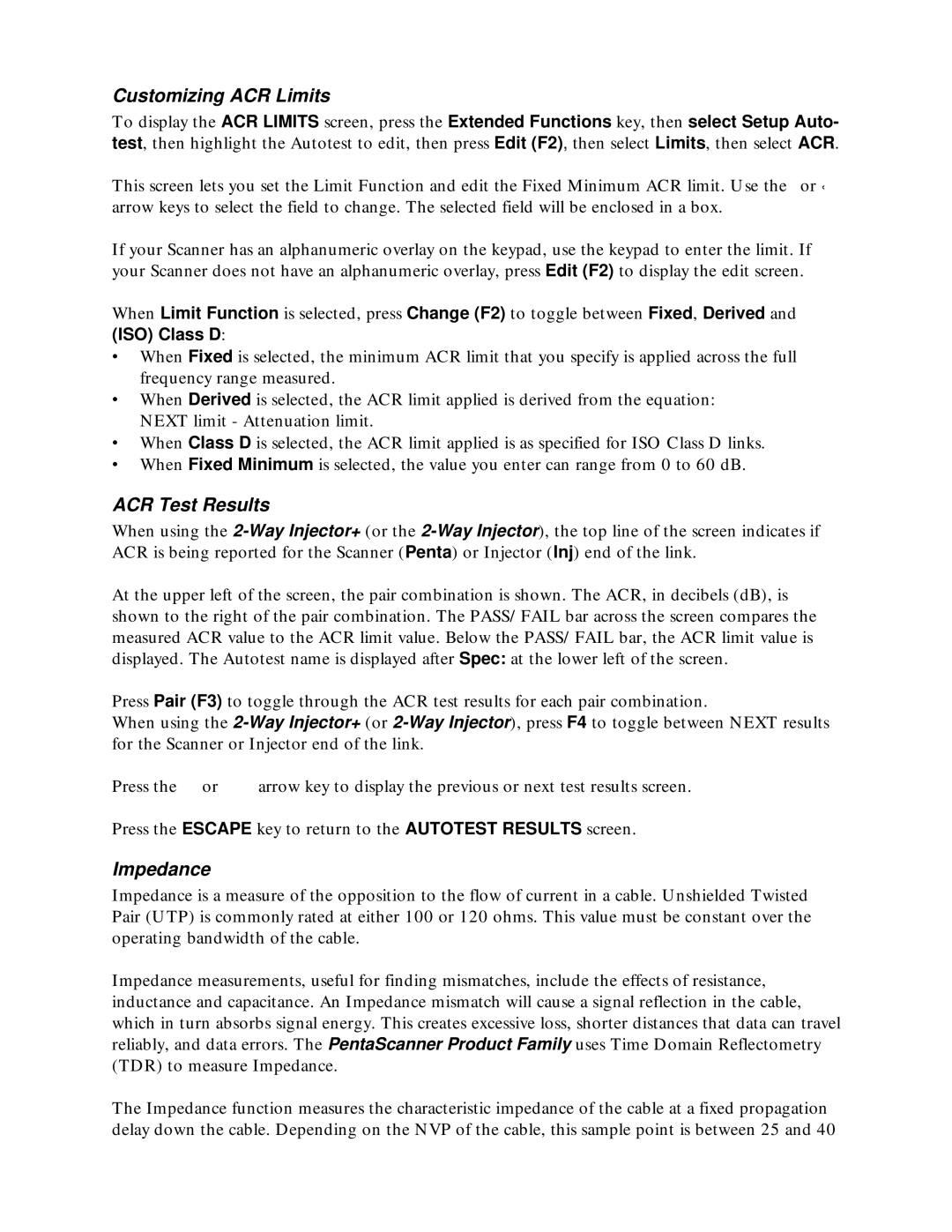Customizing ACR Limits
To display the ACR LIMITS screen, press the Extended Functions key, then select Setup Auto- test, then highlight the Autotest to edit, then press Edit (F2), then select Limits, then select ACR.
This screen lets you set the Limit Function and edit the Fixed Minimum ACR limit. Use the ž or ¬ arrow keys to select the field to change. The selected field will be enclosed in a box.
If your Scanner has an alphanumeric overlay on the keypad, use the keypad to enter the limit. If your Scanner does not have an alphanumeric overlay, press Edit (F2) to display the edit screen.
When Limit Function is selected, press Change (F2) to toggle between Fixed, Derived and
(ISO) Class D:
∙When Fixed is selected, the minimum ACR limit that you specify is applied across the full frequency range measured.
∙When Derived is selected, the ACR limit applied is derived from the equation: NEXT limit - Attenuation limit.
∙When Class D is selected, the ACR limit applied is as specified for ISO Class D links.
∙When Fixed Minimum is selected, the value you enter can range from 0 to 60 dB.
ACR Test Results
When using the
At the upper left of the screen, the pair combination is shown. The ACR, in decibels (dB), is shown to the right of the pair combination. The PASS/FAIL bar across the screen compares the measured ACR value to the ACR limit value. Below the PASS/FAIL bar, the ACR limit value is displayed. The Autotest name is displayed after Spec: at the lower left of the screen.
Press Pair (F3) to toggle through the ACR test results for each pair combination.
When using the
Press the or ∇ arrow key to display the previous or next test results screen.
Press the ESCAPE key to return to the AUTOTEST RESULTS screen.
Impedance
Impedance is a measure of the opposition to the flow of current in a cable. Unshielded Twisted Pair (UTP) is commonly rated at either 100 or 120 ohms. This value must be constant over the operating bandwidth of the cable.
Impedance measurements, useful for finding mismatches, include the effects of resistance, inductance and capacitance. An Impedance mismatch will cause a signal reflection in the cable, which in turn absorbs signal energy. This creates excessive loss, shorter distances that data can travel reliably, and data errors. The PentaScanner Product Family uses Time Domain Reflectometry (TDR) to measure Impedance.
The Impedance function measures the characteristic impedance of the cable at a fixed propagation delay down the cable. Depending on the NVP of the cable, this sample point is between 25 and 40
